Yesterday evening my son and I did an experiment with making biochar in a cone-shaped pit.
Bruce from Red Gardens on YouTube has a good video in which he uses this process:
This method appeals to me because it costs nothing and does not require burning fuel to make the biochar. The whole “barrel inside a barrel” method always struck me as wasteful and quite potentially retarded. I much prefer lower-tech solutions.
One of these, the popular Kon Tiki biochar kiln, is low-tech but seems well-designed, as well as being a step up from burning right in the ground:
If someone gifted me one I would not complain, but I also won’t bother buying or building one, as burning in a pit works quite well, as even the creators of the Kon Tiki biochar kiln note in an article posted at the Biochar Journal:
“Inspired by Josiah Hunt, we tested the production of biochar in an open earth kiln. And it worked just great. In the first attempt, we made a few hundred liters of excellent looking biochar in a conically excavated hole in the ground. This success was reason enough to construct a more precise theory about the system and to consider how it could be implemented with better technology and control.”
Since my soil here is wretched, I am going to test biochar on a bed to see if I can increase soil fertility and the ground’s ability to hold on to nutrients.
How We Made Simple Biochar
We dug a small conical pit in an old sand pile for our first burn, then gathered sticks from the woods and broke them up into manageable sizes. We started with a small fire in the bottom of the hole, let it burn down to nice coals, then loaded another layer on top. We repeated this five times with progressively larger layers as the pit’s diameter increased. When the last layer had turned into coals, my son sprayed the fire with the hose until it stopped hissing and glowing, which took a remarkable amount of time.
This morning we went out to check on our char, as it was dark last night when we finished. To our satisfaction, we had a good quantity of nice, black, fully pyrolized material.
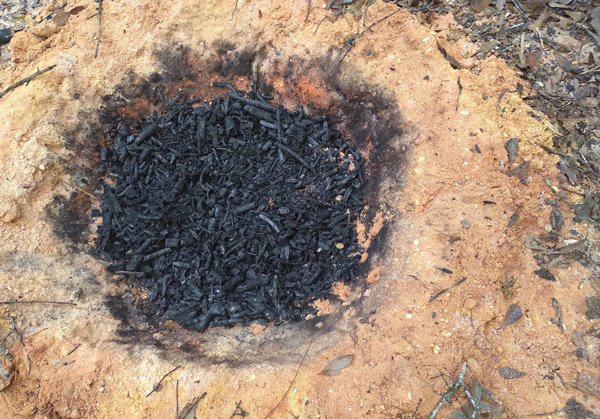
Our little test was quite successful, yielding about seven gallons of char:
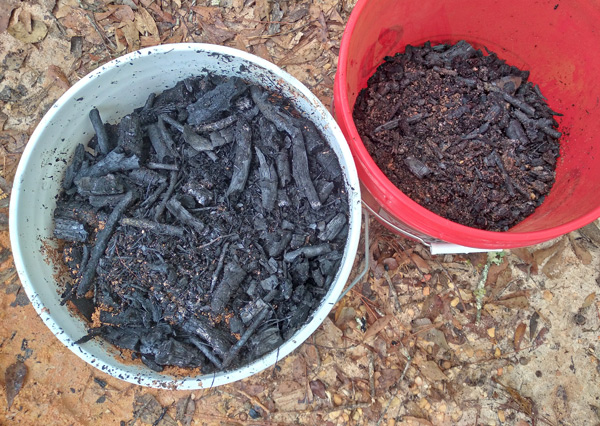
The biochar is black, well-burned and finished nicely with only a couple larger unburned pieces from the last layer, which we removed and will add to the next burn.
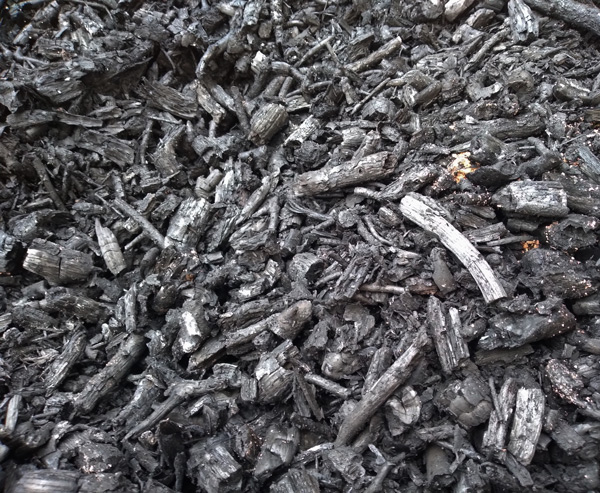
This is my type of method. All we needed was a shovel and a lighter, plus a hose to extinguish the burn.
Why Biochar?
I don’t like the way the gardens are doing right now and want to use every trick in the book to improve them.
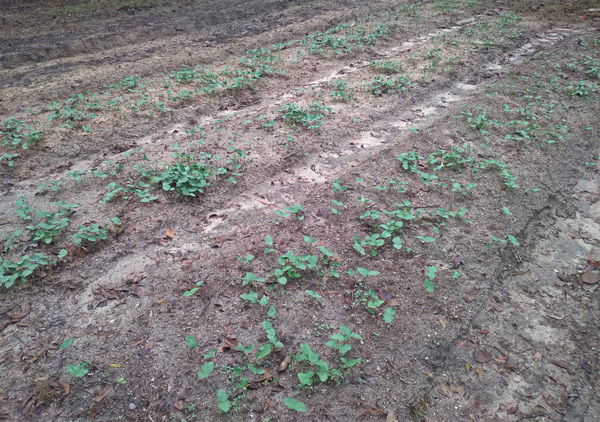
After gardening in the volcanic soils of Grenada, this is like gardening on a parking lot. It’s going to need some serious help.
I’m going to set up some beds for testing different methods and see what happens. We’ll try biochar in one, nothing in another, no-till in a third, Steve’s fertilizer mix in a fourth… it’ll be interesting.
After Steven Edholm’s reports on the efficacy of biochar for increasing fertility in poor soil, I am finally ready to give it a good test. I’ll probably dig a larger pit, though. This little pit took about 1.5 hours to make seven gallons of char, but if I had given it another layer of wood at the end its maximum yield would likely end up at 10-12 gallons. If we make a bigger pit we could likely get 25-40 gallons per burn.
Then I’ll have lots of char to test in the gardens. The trials will commence shortly.
I can’t put in the biochar yet as it hasn’t been “charged.” But that’s a post for another day.

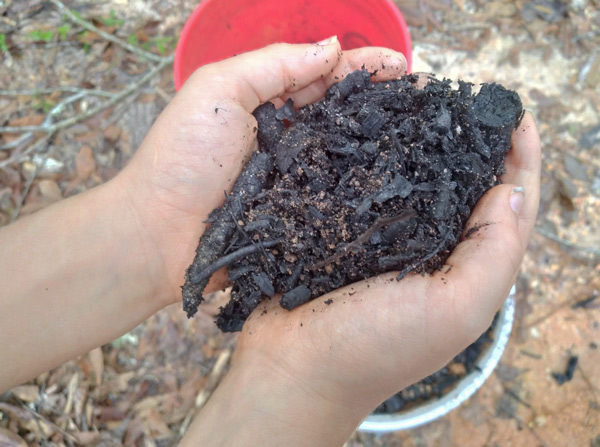
5 comments
The conical pit idea seems to work well, but it doesn’t function very well when you have sugar sand.
It’ll hold its shape when damp, but the sides wash down into the char when you hose it down at the end.
I just use a flat fire pit surrounded by rocks.
I start with a small fire, and then add the largest pieces of wood. I let them burn about half way, add medium sized pieces of wood, let them burn half way, then add kindling size pieces and hose it down a few minutes later.
If you time it right, you end up with a pretty evenly charred batch.
I think you once referred to this as the hillbilly method, but there ain’t no hills nearby, so I reckon I done did name it wrongly.
Good idea, I may try to make some to add to my compost. I actually may try to burn some wood in my charcoal grill. Digging a pit my be too much for me. Being disabled has its challenges. But there is always a way to do things.
“Gardening on a parking lot“ I can’t wait to see how the beds turn out! Good luck!
I must be retarded. I like the TLUD method (barrel in a barrel). I get 30 gals per batch. It’s nice that I can walk away and check on it from time to time while doing other task. I do want to try this method though as well. I look forward to seeing your results.
Trading fuel for time doesn’t sound tooooo retarded.
Comments are closed.